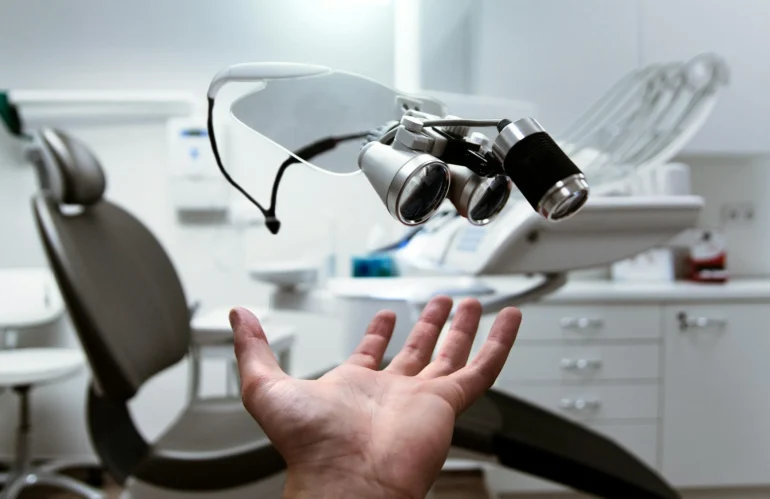April, 9 2025: The healthcare industry is undergoing a digital transformation, with remote monitoring solutions playing a critical role in delivering efficient, timely, and patient-centered care. From wearable medical devices and telehealth platforms to cloud-based electronic health records (EHRs), the sector now depends heavily on interconnected technologies.
But with this interconnectivity comes complexity—and risk. Healthcare providers must ensure that only authorized individuals can access sensitive patient information and connected systems, even when accessed remotely. This is where Identity-as-a-Service (IDaaS) becomes essential.
What Is Remote Monitoring in IDaaS?
In the context of healthcare, remote monitoring in IDaaS refers to the secure oversight of access to medical data, systems, and devices across dispersed locations. Whether it’s a clinician logging into an EHR from home, or an IoT-enabled medical device transmitting vital signs, IDaaS provides the identity and access controls necessary to secure these interactions.
IDaaS platforms manage user identities, apply security policies, and enforce authentication protocols—all from the cloud—ensuring that every digital touchpoint in the healthcare ecosystem is verified, monitored, and compliant.
How IDaaS Supports Remote Workforce Security in Healthcare
With the rise of hybrid work models, telehealth services, and outsourced staff, healthcare organizations must protect sensitive data accessed from outside the hospital network. IDaaS strengthens remote workforce security through:
Multi-Factor Authentication (MFA): Adds an extra layer of protection to logins by requiring more than just a password—helping to prevent unauthorized access.
Role-Based Access Control (RBAC): Ensures that healthcare professionals only access the data and systems relevant to their role.
Single Sign-On (SSO): Allows users to securely access multiple systems and applications with one login—reducing password fatigue and IT burden.
Geo-fencing and Risk-Based Policies: Restrict access based on user location, device compliance, or behavioral patterns.
Rapid Deprovisioning: Instantly removes access for staff who leave or change roles, minimizing the risk of orphaned accounts.
Together, these features reduce the attack surface while maintaining flexibility for healthcare workers who need access from remote clinics, homes, or mobile devices.
Benefits of Using IDaaS for Remote Monitoring in Healthcare
Adopting IDaaS offers several key benefits for healthcare organizations implementing remote monitoring:
Improved Data Security Ensures that PHI is only accessed by verified users and devices.
Compliance and Audit Readiness Simplifies adherence to regulations like HIPAA with detailed activity logs.
Operational Efficiency Automates onboarding/offboarding and reduces IT support needs.
Patient Trust and Privacy Reinforces the organization’s commitment to safeguarding sensitive information.
Support for Telehealth and IoT Manages secure access to remote patient monitoring tools and cloud apps.
These advantages enable healthcare providers to deliver secure, efficient care while embracing innovation.
IDaaS vs. Traditional IAM in Healthcare
While traditional Identity and Access Management (IAM) systems have served healthcare organizations for years, they are increasingly insufficient in a mobile, cloud-first world. Here’s how IDaaS compares:
Feature Traditional IAM IDaaS
- Deployment On-premises Cloud-based
- Scalability Limited High, suited for growing healthcare networks
- Maintenance Requires manual updates Managed by provider
- Access Management Network-centric Internet and device-aware
- Cost High upfront infrastructure Subscription-based
IDaaS delivers the agility, integration, and modern security controls required for today’s healthcare environments—without the operational burden of maintaining legacy systems.
IDaaS Remote Access Solutions for Healthcare Employees
IDaaS platforms offer a range of remote access tools that are tailor-made for healthcare organizations:
SSO Integration: Seamlessly connects healthcare professionals to EHRs, telehealth portals, and scheduling tools.
Biometric and Passwordless Login: Improves security and user experience, especially on shared devices.
Federated Identity Support: Extends access to third-party partners, labs, and consultants without compromising security.
Mobile Device Management Compatibility: Applies contextual policies to smartphones and tablets used in the field.
Self-Service Portals: Empowers users to reset passwords or request access without IT intervention.
These tools improve both staff productivity and patient satisfaction while ensuring a strong security posture.
Real-World Application: IDaaS in Remote Patient Monitoring
Remote Patient Monitoring (RPM) tools, such as glucose meters, blood pressure monitors, and ECG devices, rely on secure and uninterrupted data flow between patients and healthcare providers. IDaaS enhances RPM by:
Authenticating devices before data transmission
Linking health data to authenticated users and clinicians
Monitoring device activity and flagging anomalies in access or behavior
This ensures that the right data reaches the right provider without exposing sensitive information to threats.
Final Thoughts: Building a Secure Future for Healthcare
The digital shift in healthcare is irreversible. As telehealth, wearable tech, and cloud services expand, so do the complexities of managing access and identities remotely. IDaaS empowers healthcare providers to embrace innovation while maintaining strict security and compliance.
By enabling secure access to remote monitoring tools, protecting patient privacy, and simplifying identity management, IDaaS has become the backbone of modern healthcare IT infrastructure—helping providers deliver better care from anywhere in the world.









